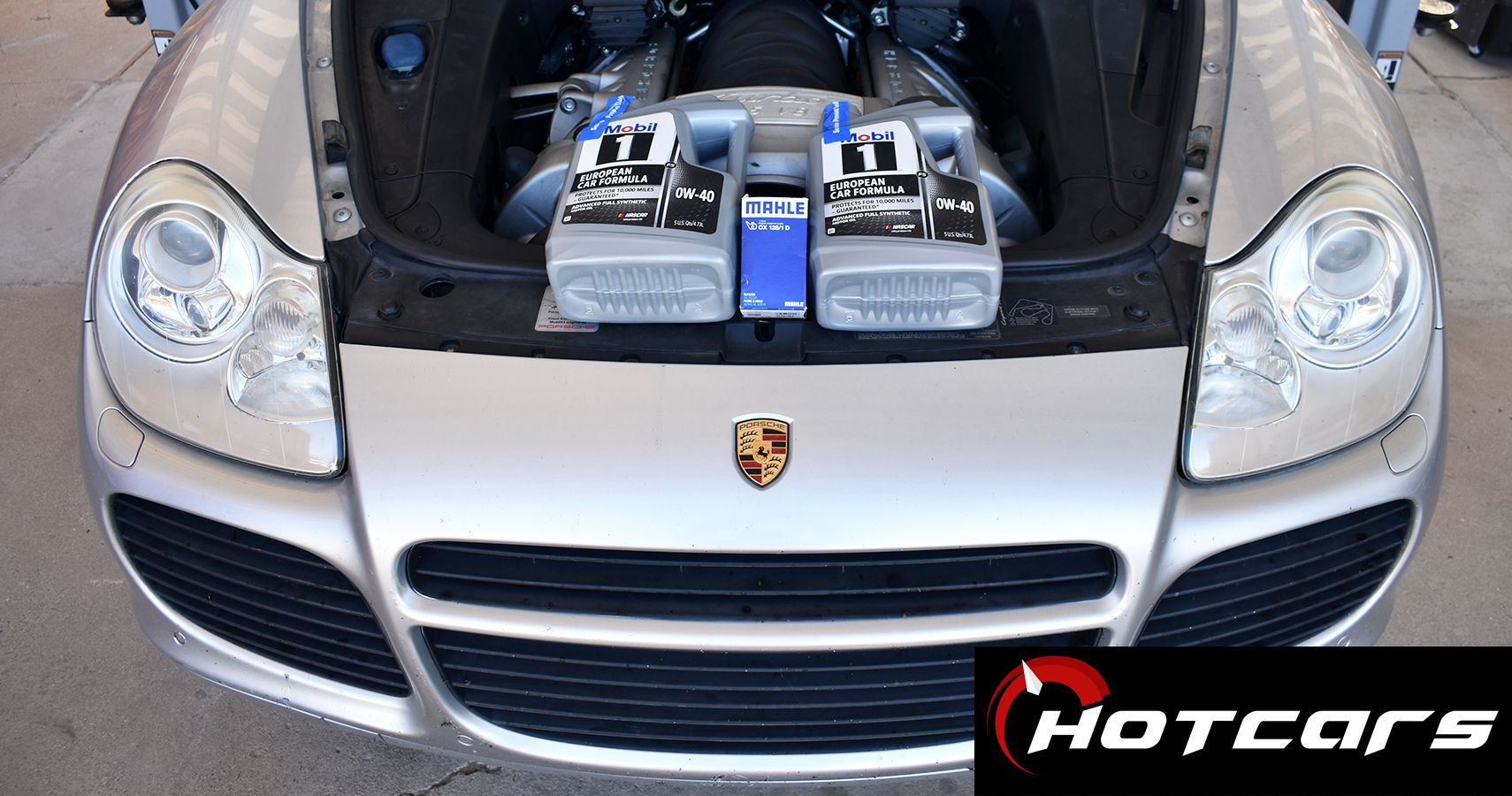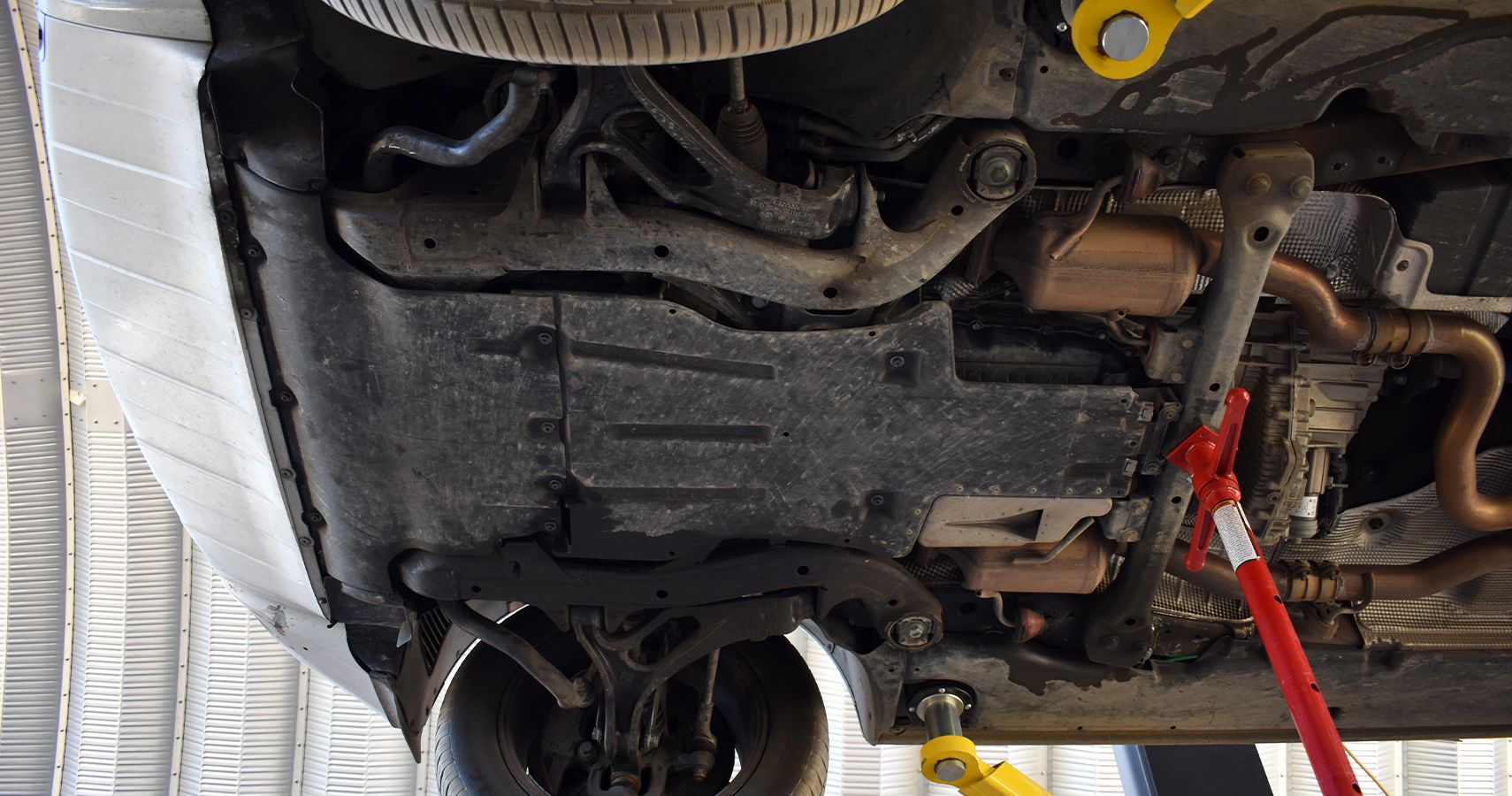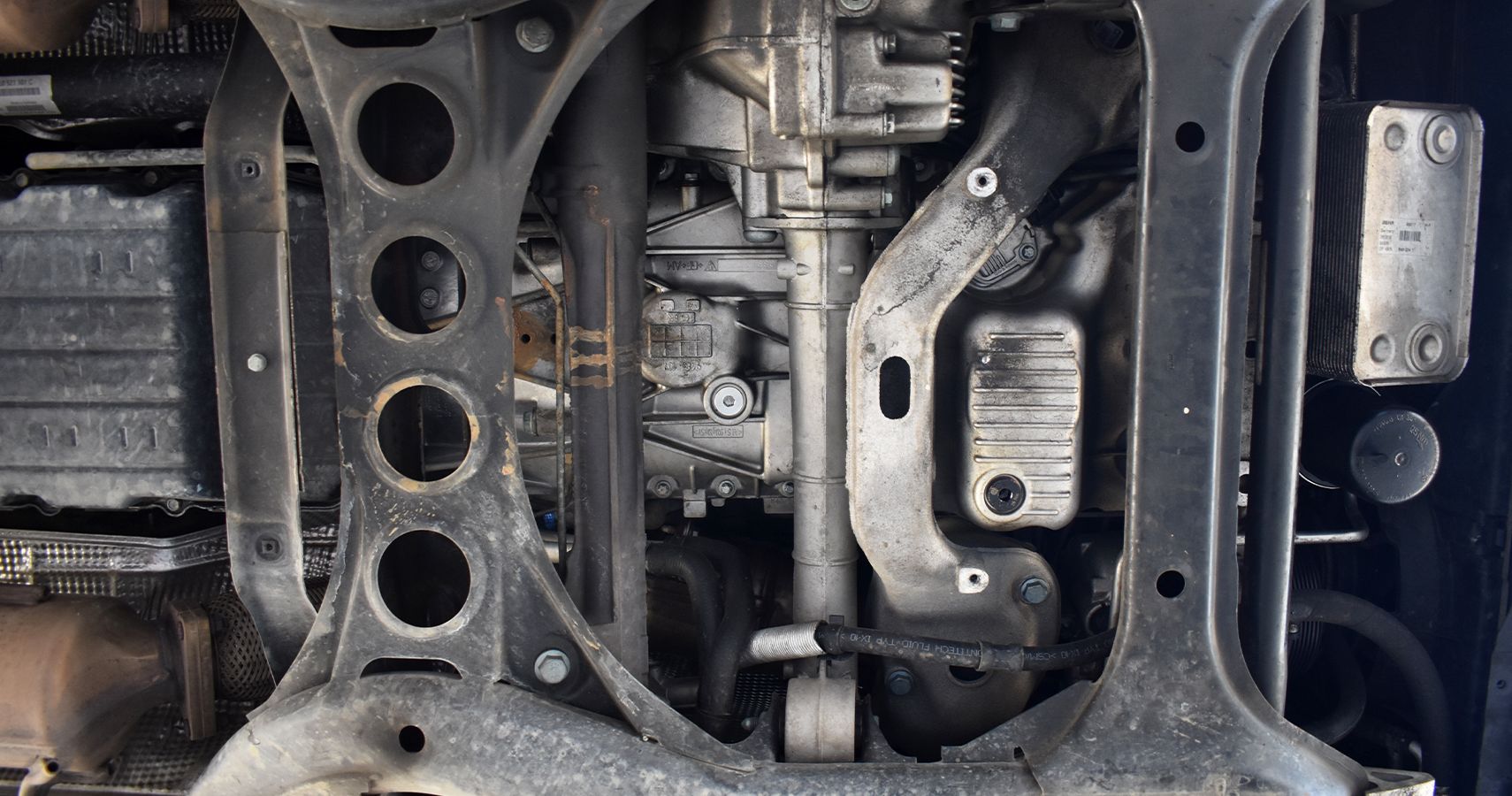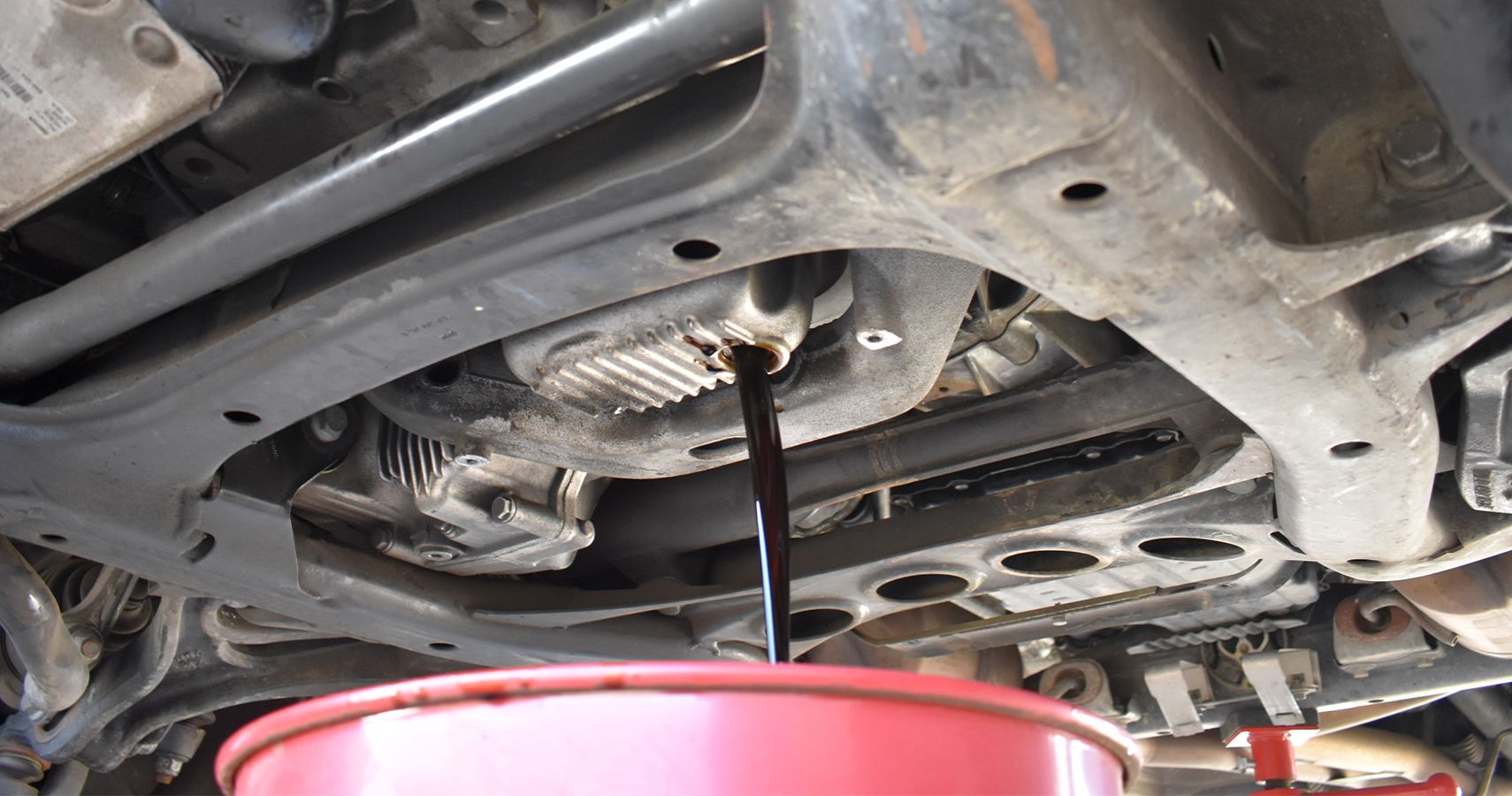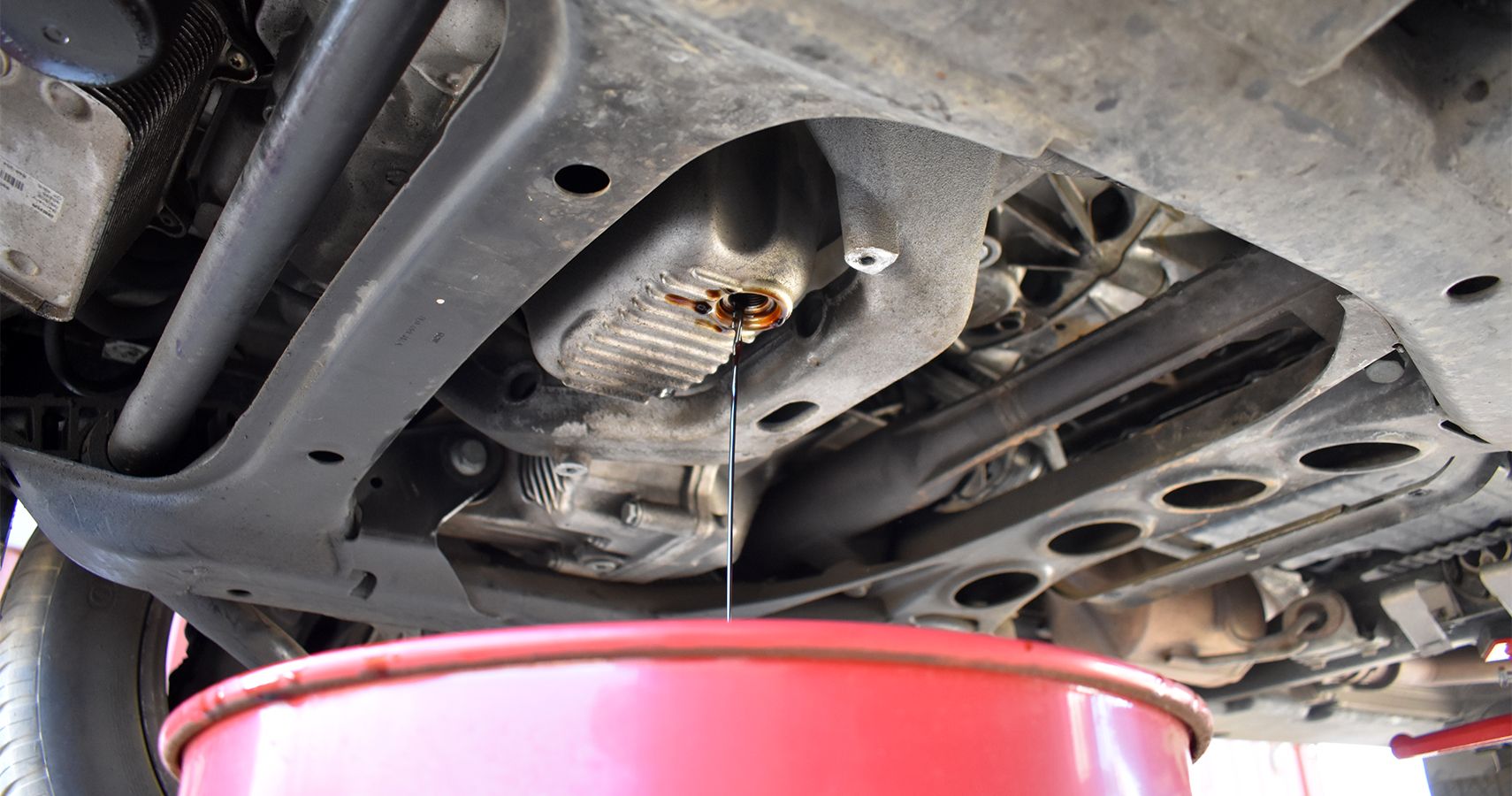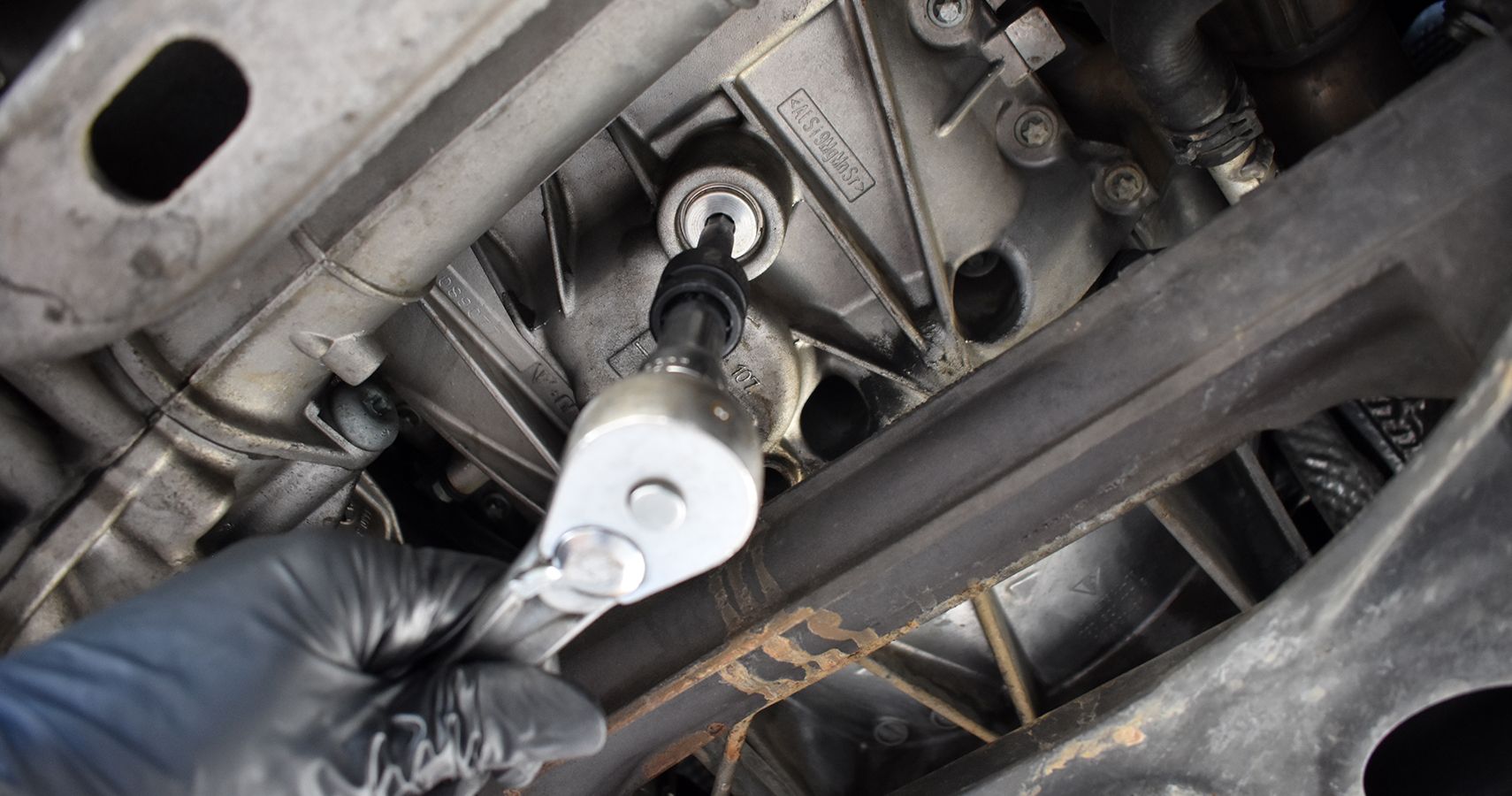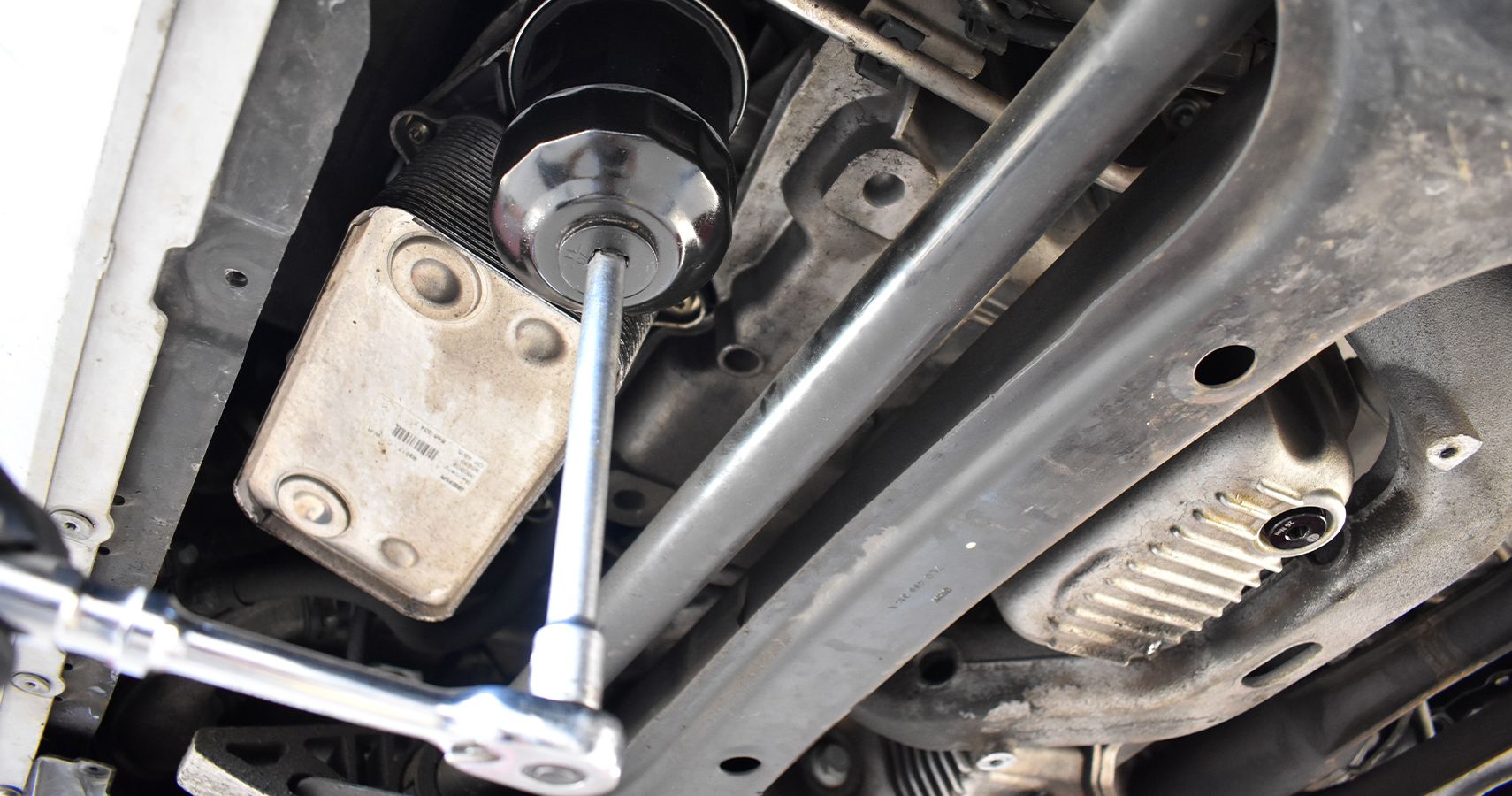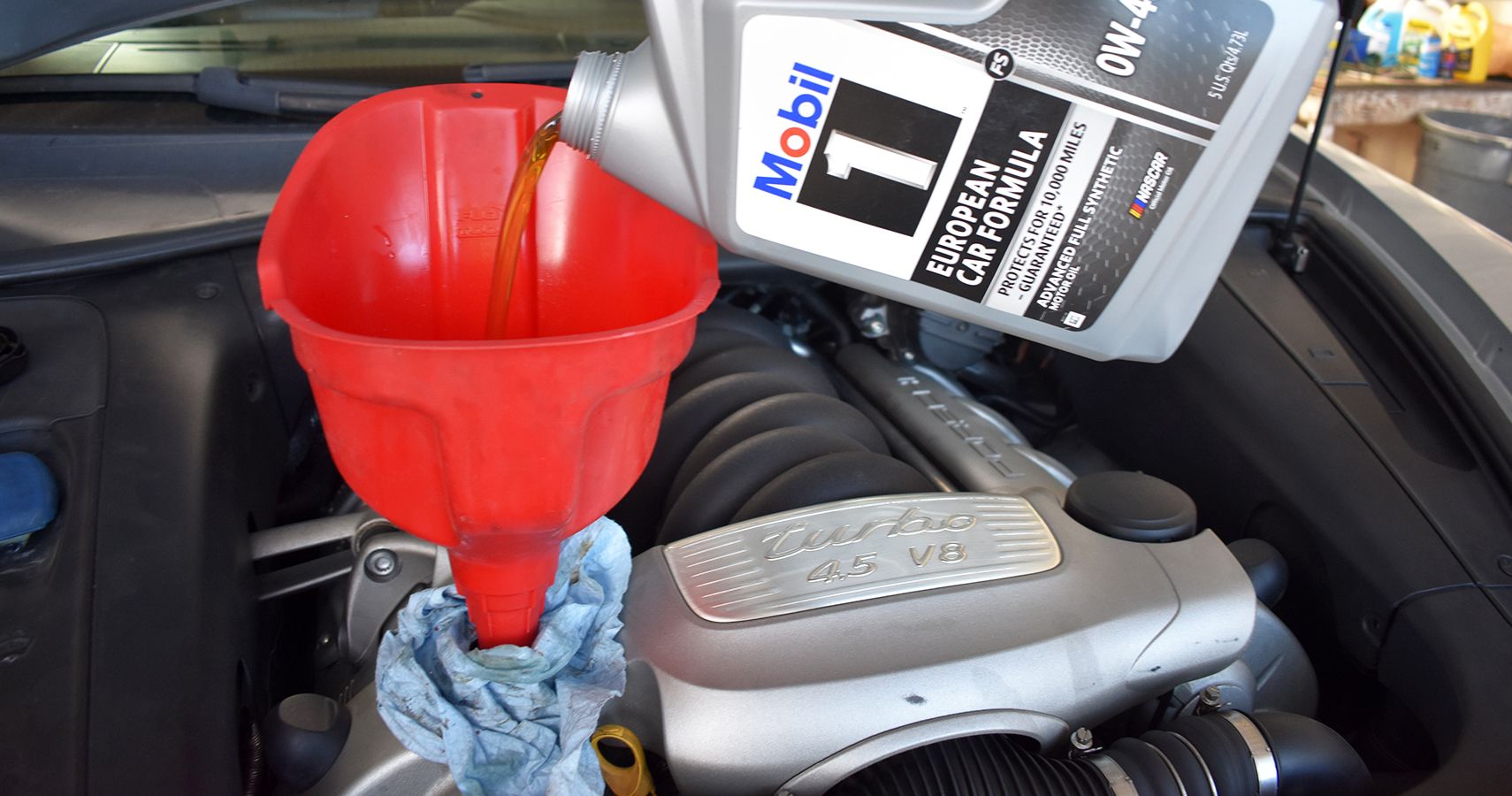Most car owners will happily admit that they put off oil changes for far too long. But when I bought a 2006 Porsche Cayenne Turbo with over 100,000 miles on the clock, changing the oil sat very high up on the long to-do list for this super SUV because of how many known engine issues can be (hopefully!) avoided just by keeping it lubed up.
Heading down to a local Jiffy Lube wouldn't leave me satisfied, either, because I wanted to check out how toasted the oil looked coming out, install a magnetic drain plug, and familiarize myself with the Cayenne's underbelly. While I might have been able to change the oil just by cranking up the air suspension to its highest setting, instead I put the Cayenne up on a Rotary lift to create less neck cranking and provide plenty of photo opportunities.
This job requires 10 quarts of your preferred oil—to be safe, though the engine should hold a little over nine—plus a new filter, spare drain plugs (just in case), and new aluminum crush washers. I went with Mobil 1 0W-40 as recommended by Porsche and a Mahle paper filter with new O-ring. Basic tools to have on hand include sockets and extensions, a Phillips-head screwdriver, an eight-millimeter hex head, a low-range torque wrench, and the correct size of oil filter wrench. And don't forget a funnel and somewhere to collect the old fluid!
Removing The Underbelly Trays
Before lifting up any Cayenne equipped with the air suspension system, make sure to toggle the cabin switch forward and lock it in place. A light will pop up on the dash indicating the airbags are ready. Though not 100% necessary, I also like to pop the hood and at least loosen the engine oil fill cap to allow for better draining later on.
Using the factory jack points, lift the truck up (staying as level as possible if not on a real lift) and then place a jack stand or two beneath strong subframe or suspension components for safety. Next, remove the plastic underbelly trays—if they're still there—with a 10-millimeter socket and the Phillips-head. The front piece requires a bit of finesse (read: force) to squeeze out between the sway bar and front wheel well, while the rear tray hooks onto metal clips.
Finding The Correct Drain Plugs
Porsche over-engineered the 955 and 957 generations of the Cayenne to prove that a super SUV could pump out huge power and also tow up to 7,700 pounds and go off-roading without concern. The V8 engines use a dry-sump oiling system, just like every single 911 up through the 996 generation (after which only Mezger engines do), which allows for steady oil pressure during acceleration, braking, and cornering—or on steep hills. But it also means the engine has two drain plugs you'll need to locate to perform an oil service: the first in the typical drain pan location and the second above and to the rear, almost looking like a transmission plug. Make sure to locate the front differential plug and avoid it.
First Things First
Using the 8mm hex key, unscrew the lower drain plug while taking care not to strip it—these aluminum pieces can feel pretty fragile, so a long-ish breaker bar with gentle, steady effort is the way to go. Be ready for the used oil to rush out into whatever container you're using to collect it. Up to seven quarts could drain out from the lower plug.
The Waiting Game
As the oil flows out, I took the opportunity to collect a sample that I'll send off to Blackstone Laboratories in the name of science. I'm curious to see what they have to say about wear metals and other contaminants that might appear in the oil used to lubricate an aluminum twin-turbo V8 crammed into a famously hot engine bay. The twin-turbo V8 Cayenne usually avoids the well-known bore scoring problems that naturally aspirated powerplants suffer from thanks to using more oil squirters, but I figure it can't hurt to establish a baseline for any future oil samples.
Pull Out An Extension
Once the oil flow subsides to a slow drip, reinstall the old drain plug with a new crush washer. Or, spend a few extra bucks and buy a magnetic drain plug to allow for a quick amateur engine oil analysis at your next oil change. Use the torque wrench to tighten the drain plug to only 25 Newton-meters or around 19 lb-ft of torque.
Moving on, the second engine oil drain plug requires a socket extension to access with a long enough breaker bar. Follow the same procedures as the first drain plug, though significantly less fluid will likely flow out of this one.
Removing The Oil Filter
Porsche mounted the plastic cartridge-style oil filter housing right up front next to the oil cooler—something that actually isn't ideal for off-roading and that can be ameliorated with a beefier skid plate or, alternatively, LN Engineering's spin-on oil filter adapter that allows for the use of a metal spin-on oil filter. Take care using the metal oil filter wrench on your plastic spin-on housing, if still present, and slowly remove. This part can get a little messy because the cartridge is full of oil and more will flow out of the engine, as well.
Pour the remaining oil out of the housing, then remove the paper filter. If you're like me, you'll take a look at it to check for any metal filings or pieces of sealant—the more obsessive might even cut open the filter and unfold it to check further. Remove the O-ring on the threads (Porsche provided a little space for a metal hook to help with this, if necessary), then place the new filter in the housing, coat the new O-ring with some fresh oil, and tighten up onto the engine again. My housing indicated 25 Newton-meters, too.
I kept the paper filter in a Ziploc bag and plan to ship it back to FCP Euro and take advantage of the company's lifetime replacement guarantee. It'll only save a few bucks but I'm curious to learn whether the process actually works smoothly!
Don't Forget To Refill The Oil
I like to clean up any oil that's spread on the underside of the engine—rest assured, there will always be some—and then wait a few minutes to make sure the drain plugs and filters aren't leaking. Then, reinstall the underbody trays, remove the jackstands, and lower the Cayenne to the ground. At this point, don't forget to put new oil in the engine before driving away!
Sometimes the little engineering details on a car blow my mind. In the case of the Cayenne, a funnel can stand up in the oil filler and there are little air gaps that allow the fluid to flow in without glug-glugging or overflowing. Begin by pouring in about eight quarts of fresh oil, wait for it to flow down through the engine, then check the dipstick. Once you've reached the max line, tighten the fill cap and then fire up the engine for 10 or 20 seconds to allow the oil pump to refill the cartridge filter housing. Wait a few more minutes, then check the dipstick again and add oil as needed—and don't forget to tighten down the cap afterward, otherwise, a check engine light will pop up pretty quickly. I ended up using about eight and three-quarter quarts in total.
This whole job should take an hour or less, depending on experience. I always like to check the dipstick after the next few times I drive the car following an oil change to make sure nothing went wrong. But all in all, the Cayenne makes this job relatively easy, so I plan to change the oil at least every 3,000 miles, if not sooner.
Sources: jiffylube.com, mobil.com, mahle-aftermarket.com, blackstone-labs.com, lnengineering.com, fcpeuro.com,

